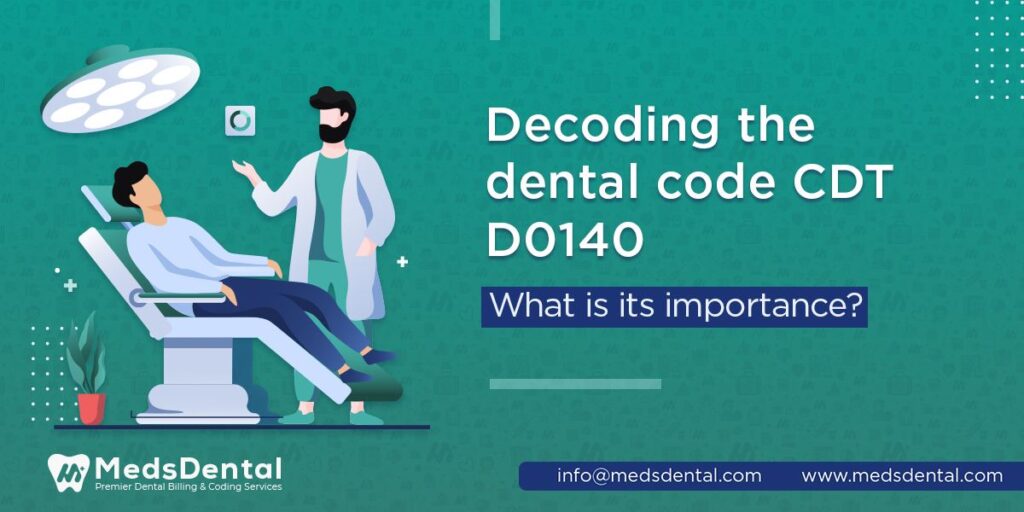

D0140 — Dental Code is the dental procedure for Limited oral evaluation – problem focused
The CDT D0140 dental procedure code is a diagnostic procedure used to evaluate a patient’s overall oral health. It is also commonly referred to as a “comprehensive oral evaluation” or a “COE.” This procedure is typically performed during a patient’s initial dental visit, but it may also be performed periodically throughout a patient’s course of treatment. During a comprehensive oral evaluation, our dental professionals will thoroughly examine a patient’s teeth, gums, and surrounding oral tissues. This will include an assessment of the patient’s overall oral health and any existing dental issues that may require treatment. Additionally, our dental professionals may use diagnostic tools such as X-rays and other imaging techniques to further evaluate a patient’s oral health.
The CDT D0140 dental procedure code is an important tool for ensuring our patients receive the most accurate and effective dental care possible. By performing a comprehensive oral evaluation, we are able to identify any existing dental issues and develop a personalized treatment plan for each patient. This not only helps to improve a patient’s overall oral health but also helps to prevent more serious dental issues from developing in the future. In addition, the CDT D0140 dental procedure code is an important tool for accurately diagnosing dental issues. By performing a thorough examination of a patient’s teeth and surrounding oral tissues, we are able to identify dental issues that may not be immediately apparent. This allows us to develop a more accurate diagnosis and treatment plan, which can help to ensure our patients receive the most effective treatment possible.
Before undergoing D7250, your dentist will take an X-ray to determine the extent of the damage or infection. The dentist will then administer a local anesthetic to numb the area surrounding the tooth. Once the area is numb, the dentist will create an access hole in the tooth to remove the infected pulp. After the pulp is removed, the dentist will clean and shape the canals inside the tooth, filling them with a rubber-like material called gutta-percha. The access hole is then sealed with a temporary filling, and a permanent filling or crown may be placed at a later appointment to protect the tooth.
Before undergoing D7250, your dentist will take an X-ray to determine the extent of the damage or infection. The dentist will then administer a local anesthetic to numb the area surrounding the tooth. Once the area is numb, the dentist will create an access hole in the tooth to remove the infected pulp. After the pulp is removed, the dentist will clean and shape the canals inside the tooth, filling them with a rubber-like material called gutta-percha. The access hole is then sealed with a temporary filling, and a permanent filling or crown may be placed at a later appointment to protect the tooth.
© MedsDental. All rights reserved 2024. Powered by MeshSq.